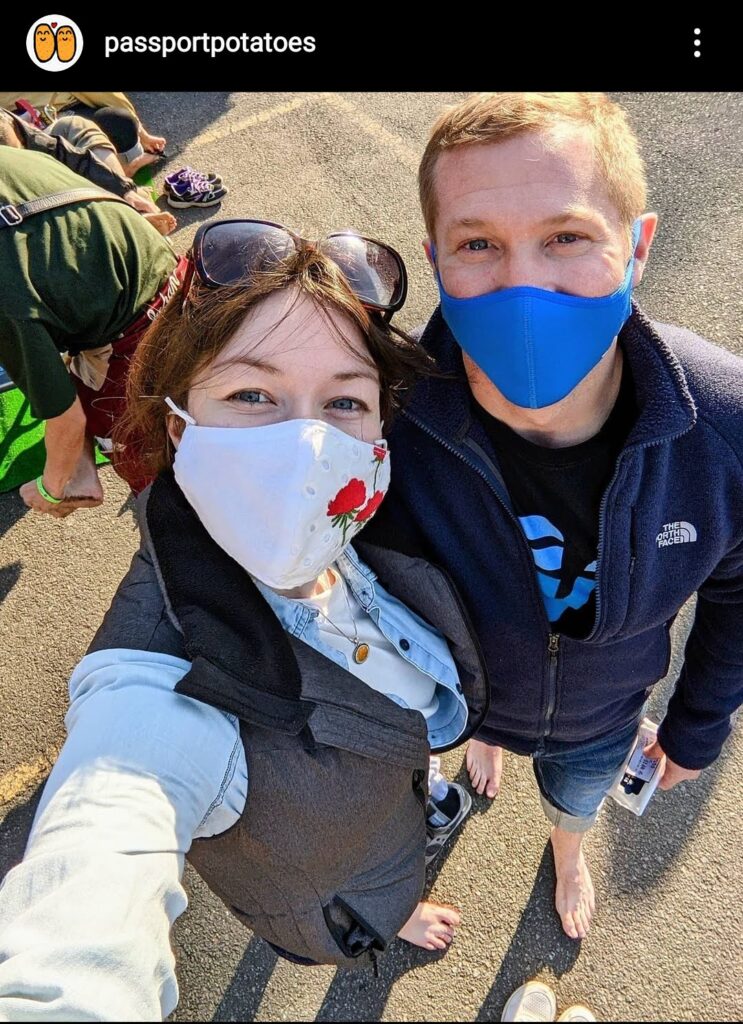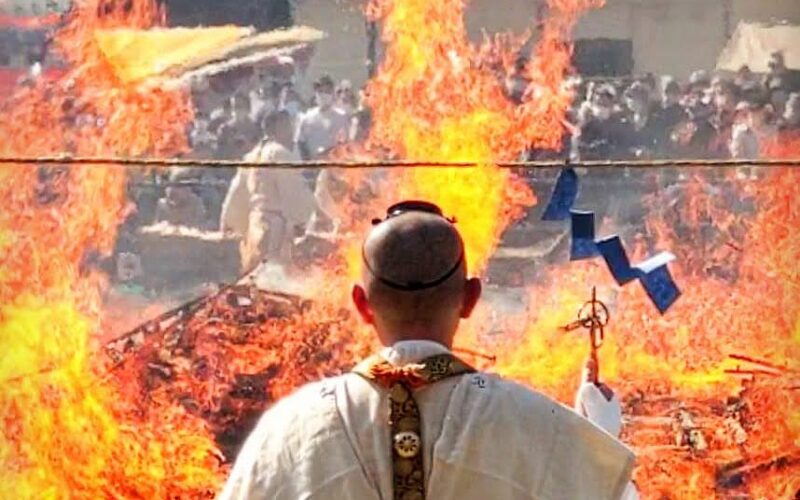Hands down the coolest thing I’ve seen in Japan. This is the annual Fire Walking Festival at Mt. Takao; my first Japanese festival experience. It sparked a love for cultural festivals in me and totally changed my tourism style.
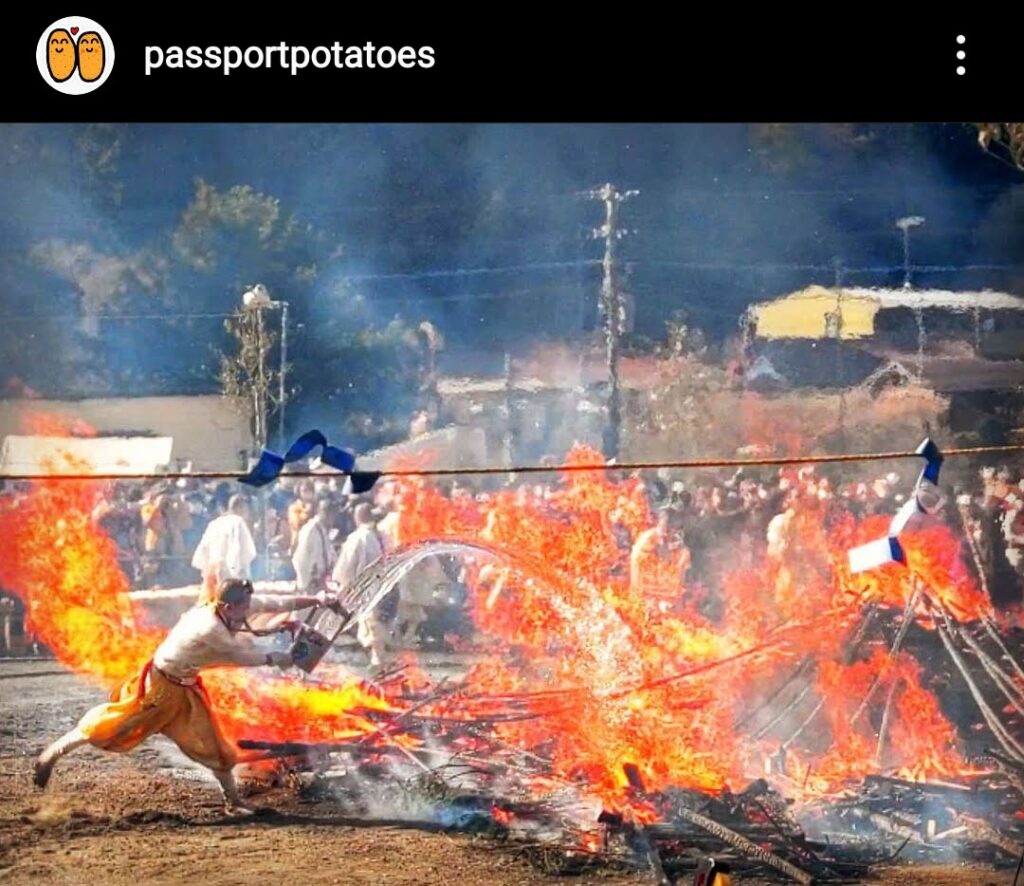
Fire festivals (a.k.a. Hiwatari Matsuri) happen all over Japan. They symbolize purification, rebirth, and protection from plague. The Japanese felt that it was important that the festival go forward even in the midst of the pandemic for that reason. They did not advertise it, masks were required, and they limited visitors to 1,000. We weren’t even positive exactly when or where it was happening, but I asked the folks at the Yujo Center to call the responsible temple and translate for for me; they confirmed a fire festival would be happening midmorning on the second Sunday of March “in the parking lot” at Mt. Takao. So we drove towards the mountain on Sunday morning hoping we’d find a parking lot with a blaze in it. I also happened to be hungover so the fact that we found the festival, photographed it, and then walked over the hot coals for the monks’ blessing was really a triumph.
Here’s how the festival went, start to finish: (video coming!)
It started with the monks walking in a procession down from the Takaosan Yakuoin temple on Mt. Takao. We just happened to turn on to the same street as them. I heard what sounded like jingle bells, glanced to the right, and saw men in robes marching towards us. We followed them right to the unnamed parking lot. The whole day was that kind of lucky. We parked at the right place, walked down the right street at the right time, and got a front row seat to the entire event.
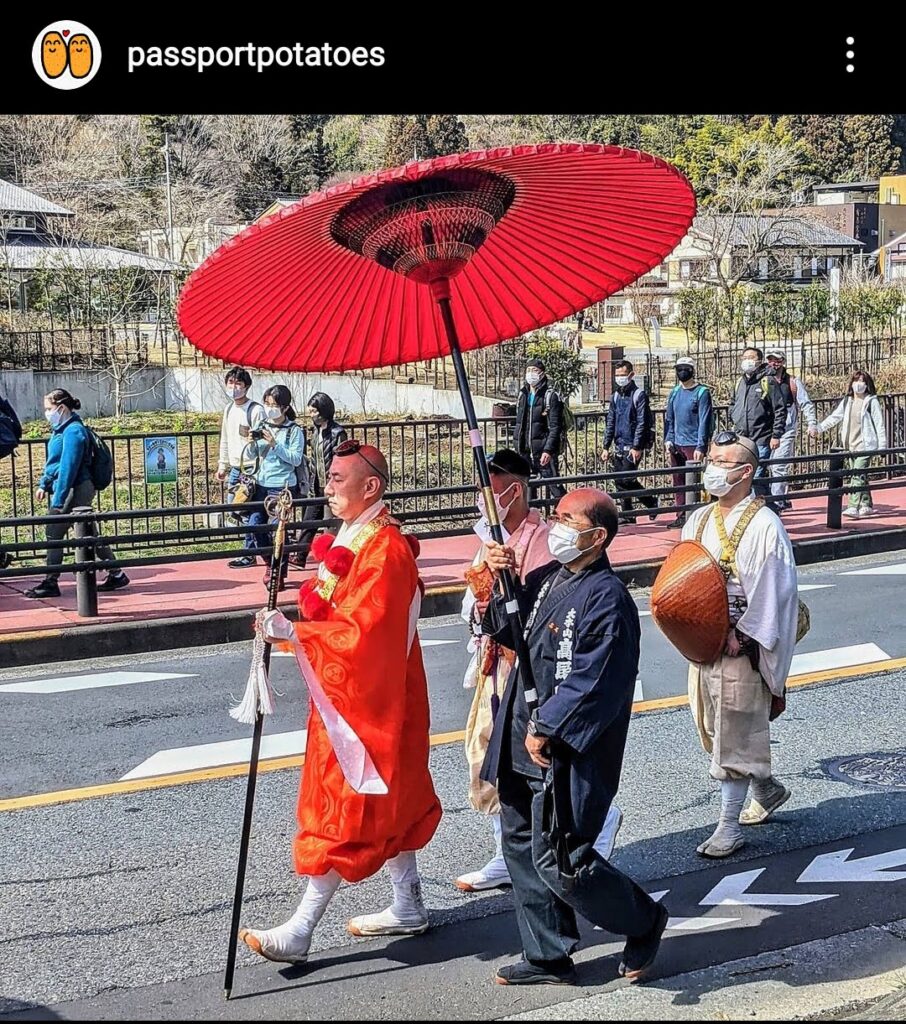

The monks are wearing traditional garb with split-toe Tabi shoes and carrying olive sprigs. They stopped at a temple on the way for a short ceremony, then entered the neighboring parking lot and built a truly massive fire. There was about an hour of solemn chanting in Japanese for a quiet crowd. I’m told that it was mostly listing names of families who have donated to the temple. Then we witnessed more than we bargained for: sacred arrows fired into the air, a sword dance in front of the pyre, monks dousing themselves in hot water with olive branches, shouting at the crowd while shaking a spear, throwing wooden sticks with runes onto the flames, and more. I was in total awe. In classic Japanese fashion I saw several onlookers rush to grab the fallen arrows for luck and when multiple sets of hands grasped them, everyone let go and bowed to insist that the other take it.
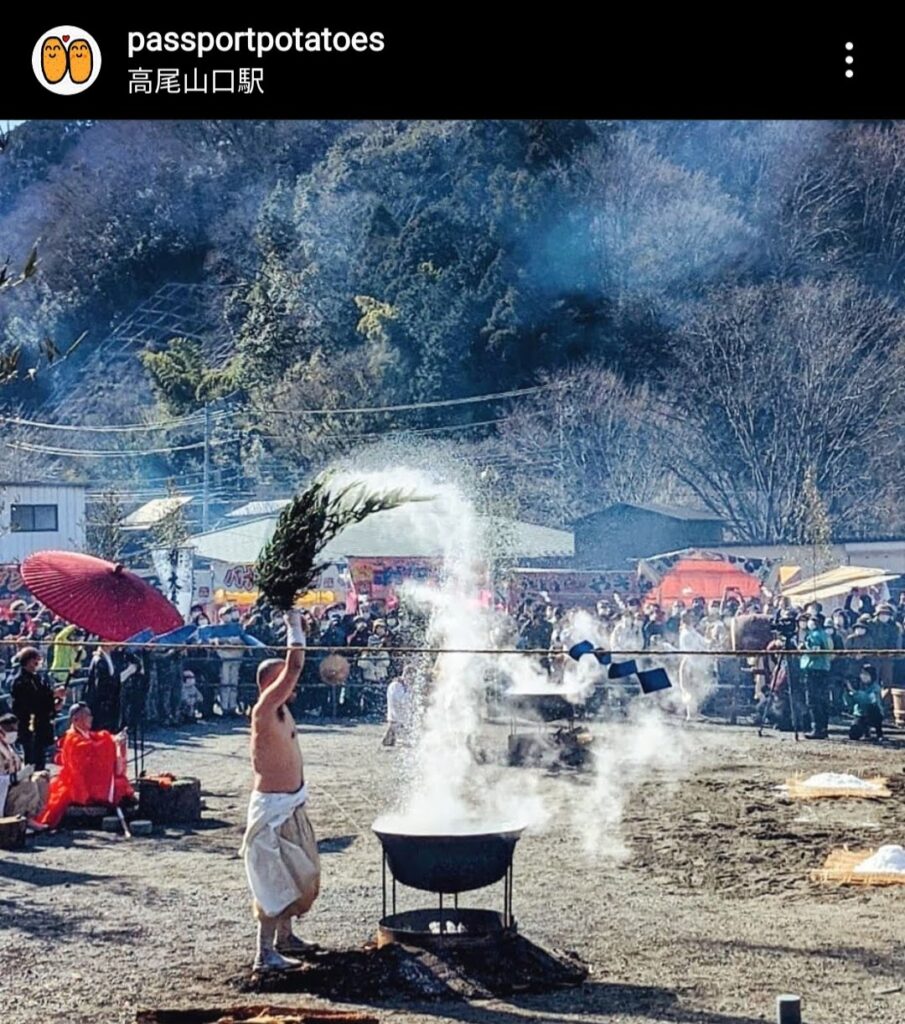
The fire started as a quiet crackle but the monks stoked it into an inferno in no time. They chanted a steady repeating song for several hours from start to finish, even after their voices went hoarse from the smoke. At one point the fire got a bit out of control and the chanters with microphones left their mics behind to assist with buckets. They continued the chant even while running to and fro laden with water. Not until the sun was setting and the fire completely doused did the chanting cease. The parking lot was ringed with firefighters just in case, but thankfully they did not have to step in. The Japanese take fire safety very seriously and you will see many festivals throughout the year in honor of firefighters in particular.
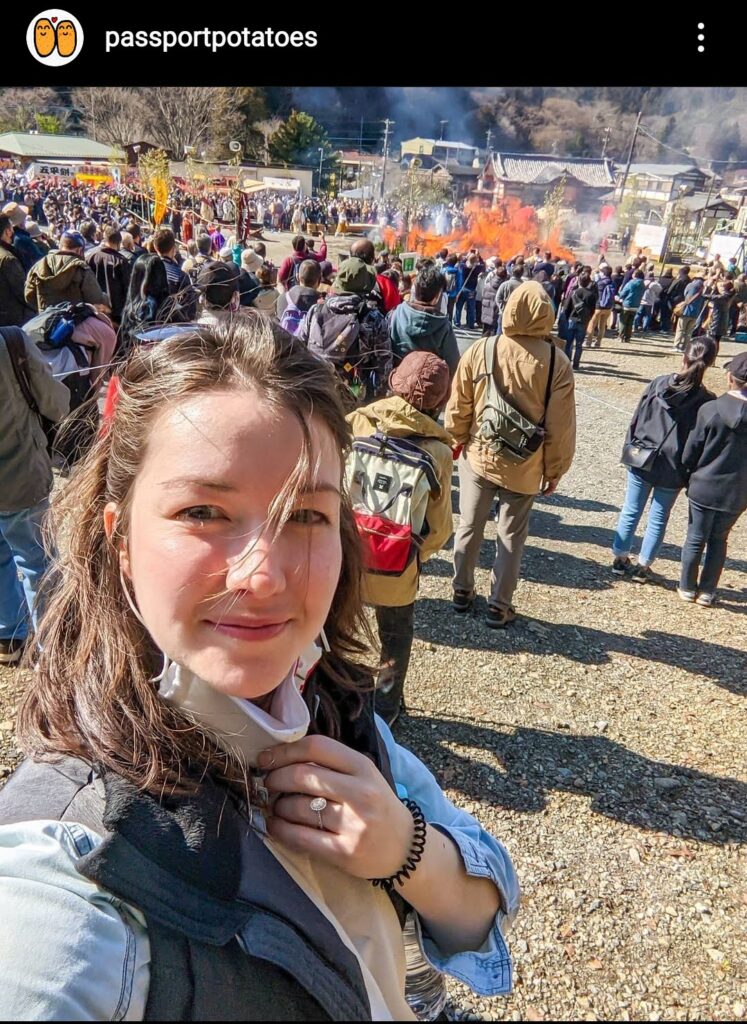
Once the fire was doused, the onlookers lined up single-file to walk the coals. The line snaked around the parking lot multiple times and we could not find clear instructions on how to join. We went for coffee down the street and came back to see how it was progressing. Only about 100 people were left this time so we lined up too, but when we finally made it to the coals, they gestured that we needed arm bands and made an x sign with their fingers to deny us entry. The language barrier prevented any further communication and I could tell they were tired and done for the day; we were not getting through.
And yet, our luck continued. A tiny Japanese woman wearing green velour pants was in line right in front of us, about to step on the coals. She saw us get denied and left the line. She gestured to me and started walking across the lot. She stopped, turned around, and gestured again. I turned to see if she was talking to someone behind me but no, we were the only ones left. I hesitated and she waved a third time. The men began cleaning up and roping off the coals. Our window was closing. The lady called something in Japanese and I went for it. I ducked under the ropes and jogged over to her. She waved enthusiastically and booked it across the parking lot back to the temple next door. I fleetingly realized that it might look like I was chasing an old lady, but I kept up pursuit with Keith close behind. As we approached the temple she shouted something in Japanese, still at a dead run, to monks who were packing up supplies. It must have been something like “wait! 2 more wrist bands!” because a robed monk stopped what he was doing, opened a box, and pulled out two wristbands for us with a bow. She hurriedly attached them and ran back to the line where she had lost her place to help us. She gestured for us to remove our shoes and socks and to follow her across the coals. The men who had insisted we needed wrist bands begrudgingly allowed us past with a stern “no!” when I took my phone out. Lesson learned – photos are ok during the ceremony, not during the walk. It was better that way anyhow.
Now, I didn’t know how hot the coals would be and I was a little scared. Earlier I’d seen small children walk it with their families, however one toddler had frozen mid-walk and a monk had raced to him to pick him up and whisk him to non-fiery ground, and this made me think it was still hot. The ground was smoking with small pockets of flames here and there. But we weren’t about to back out now! Keith and I took a deep breath and walked across the coals after her. They were barely body temperature, to my surprise. A soot-streaked monk awaited us at the end, pressed a gold-tipped staff to my shoulder, blessed us for the coming year (I think), handed us two wet wipes, and that was it. We were fire walkers.

I almost hugged the little Japanese lady in green velour before remembering that we were in a pandemic. Instead I repeated thank you over and over again and touched her arm. Now I know to say “Go Shinsetsu Ni”, meaning “you are so kind”, when just saying thank you doesn’t feel like enough. Her friendly gestures probably changed the course of my travel in this country (I monitor festival dates like mad now), and who knows, we may have gotten a little pandemic protection from it. We needed it; our struggles getting the vaccine in Japan are a whole other story.
